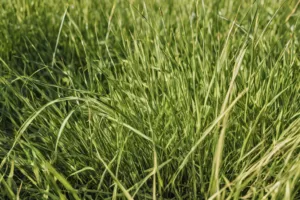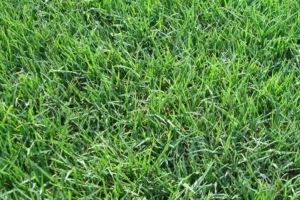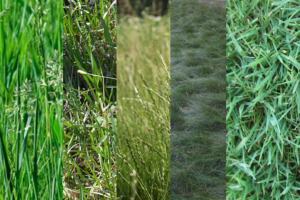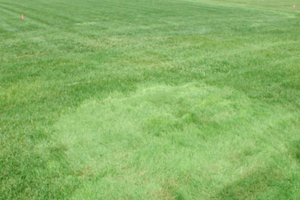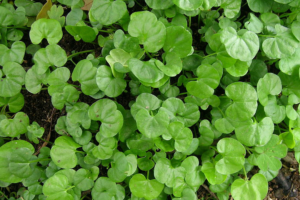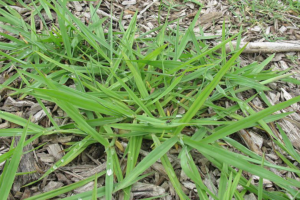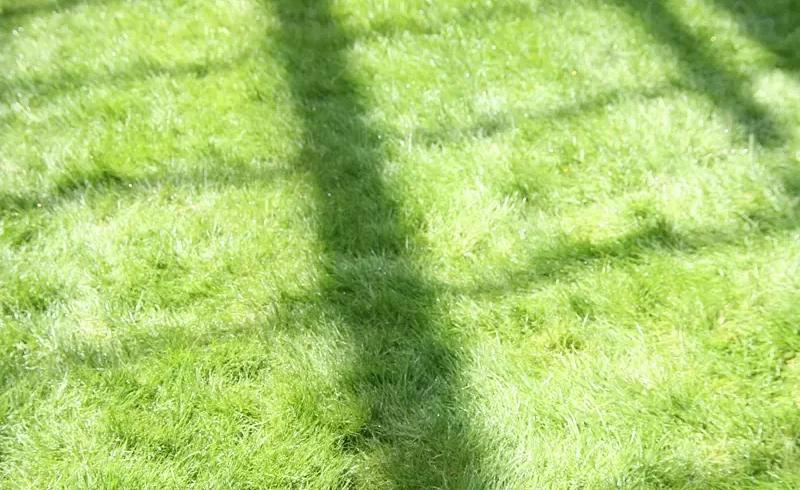
Rough Bluegrass, scientifically known as Poa trivialis, is a cool-season perennial grass native to Europe. It’s known for its fine texture and bright green color, which can add a lush, vibrant look to any landscape. Rough Bluegrass is well-suited to relaxed, moist environments, making it popular in northern climates and shaded areas.
Despite its name, Rough Bluegrass is quite soft to the touch. It gets its name from the short, rough leaf sheaths that distinguish it from other types of bluegrass. While it’s less commonly used than Kentucky bluegrass or perennial ryegrass, Rough Bluegrass has unique characteristics that make it a valuable addition to specific landscapes.
Importance and Uses of Rough Bluegrass
Rough Bluegrass has several important uses in both residential and commercial landscaping. Its ability to thrive in shaded, moist areas makes it a good choice for lawns with large trees or other sources of shade where other types of grass may struggle. It’s also often used in mixtures with other grass species to improve the overall shade tolerance of the lawn.
In commercial settings, Rough Bluegrass is commonly used in golf courses, particularly in rough and shady areas. Its fine texture and bright green color make it visually appealing, while its tolerance for low mowing makes it practical for these high-traffic areas. Despite its benefits, Rough Bluegrass does have its challenges, including a tendency to form patches and susceptibility to certain diseases, which we’ll explore in more detail later in this guide.
Characteristics of Rough Bluegrass
Rough Bluegrass is a cool-season grass that grows most vigorously during the more excellent parts of the year, typically in the spring and fall. It has a fine texture and a bright green color, which can create a lush, carpet-like appearance when properly maintained. The leaves are folded in the bud, and the ligule is long and membranous, with a rounded apex.
One of the distinguishing characteristics of Rough Bluegrass is its stoloniferous growth habit. This means it spreads by producing stolons, or runners, that grow along the soil’s surface. This allows Rough Bluegrass to form a dense mat of grass, which can be beneficial for preventing soil erosion. However, it also means that Rough Bluegrass can sometimes form patches in a lawn, particularly in conditions of high moisture and low light.
Growth Habits and Requirements
Rough Bluegrass prefers excellent, moist conditions. It thrives in areas with plenty of shade and well-drained, fertile soil. While it can tolerate some sun, it generally doesn’t perform well in hot, dry conditions. Rough Bluegrass can go dormant during drought, turning brown until favorable conditions return.
One of the benefits of Rough Bluegrass is its tolerance for low mowing. This makes it a popular choice for golf courses and other areas with high foot traffic. However, it’s important to note that Rough Bluegrass can be susceptible to certain diseases, particularly in high moisture conditions. Proper maintenance, including regular mowing and adequate drainage, can help to keep Rough Bluegrass healthy and vibrant.
Ideal Conditions for Planting
Rough Bluegrass is best planted in the early fall when temperatures are more relaxed, but the soil is still warm enough for seed germination. This timing allows the grass to establish before the winter and take full advantage of spring’s excellent, moist conditions for growth.
The ideal soil for Rough Bluegrass is well-drained and fertile. It prefers slightly acidic to neutral pH levels. If you’re planting Rough Bluegrass in a shaded area, please ensure the location gets some indirect light. While this grass type is shade-tolerant, it still needs some light for optimal growth.
Steps for Successful Cultivation
Before planting Rough Bluegrass, prepare the soil by removing any existing vegetation and loosening the top layer of soil. This can be done using a garden tiller or a garden fork. Once the soil is prepared, you can sow the Rough Bluegrass seeds. Make sure to distribute the seeds evenly across the soil surface.

After sowing the seeds, lightly rake the area to cover the seeds with a thin layer of soil. This helps to protect the seeds and encourages better seed-to-soil contact, which can improve germination rates. Water the area thoroughly after planting and moisten the soil until the seeds germinate.
Once the Rough Bluegrass grows, water it regularly, especially during dry periods. Mow the grass when it reaches about 3 inches in height, cutting it back to about 2 inches. Regular mowing helps to encourage a denser growth habit and can help to prevent the formation of patches.
Identifying Common Pests and Diseases
Rough Bluegrass can be susceptible to various pests and diseases like any plant. One of the most common pests is the billbug, a type of weevil that can cause significant damage to the grass. Billbugs feed on the stems and roots of the grass, causing yellowing and wilting. If left unchecked, a billbug infestation can lead to significant, irregular patches of dead grass.
Regarding diseases, Rough Bluegrass is particularly susceptible to a condition known as “snow mold.” This fungal disease is most common in areas with long periods of snow cover, but it can also occur in excellent, wet conditions. Snow mold causes circular patches of dead or dying grass, often with a pink or gray mold growing on the surface.
Prevention and Treatment Methods
Preventing pests and diseases in Rough Bluegrass involves maintaining proper grass care. Regular mowing, adequate watering, and proper fertilization can all help to keep the grass healthy and resistant to pests and diseases. It’s also essential to ensure good drainage, as waterlogged conditions can promote the growth of fungal diseases like snow mold.
I’d like to tell you that acting quickly is essential if you notice signs of pests or diseases in your Rough Bluegrass. For billbugs, treatments include both chemical and biological insecticides. For snow mold, fungicides can be effective, but it’s also essential to remove any excess thatch and avoid overwatering, as these conditions can promote the growth of the fungus. Find out how to treat fungus on your lawn here.
In some cases, if the damage is severe, it may be necessary to reseed the affected areas. When reseeding, consider using a mixture of grass species to increase the overall resilience of your lawn.
Advantages of Rough Bluegrass
Rough Bluegrass has several advantages, making it a valuable choice for specific landscapes. One of its most notable benefits is its shade tolerance. Unlike many other types of grass, Rough Bluegrass can thrive in areas with partial to full shade, making it an excellent choice for lawns with large trees or other sources of shade.
Another advantage of Rough Bluegrass is its delicate texture and bright green color. This gives it a lush, carpet-like appearance that can be very attractive. Additionally, Rough Bluegrass is a cool-season grass, which means it stays green and actively grows during the spring and fall when many other types of grass are dormant.
Rough Bluegrass is known for its ability to withstand heavy foot traffic, making it a popular choice for public parks, golf courses, and other high-traffic areas. Its stoloniferous growth habit allows it to quickly recover from damage, as new growth can easily spread to fill in any bare spots.
Disadvantages of Rough Bluegrass
Despite its many advantages, Rough Bluegrass has disadvantages that can limit its use in certain situations. One of the main disadvantages is its susceptibility to certain pests and diseases, such as billbugs and snow mold. These issues can cause significant damage if not properly managed.
Another disadvantage of Rough Bluegrass is its poor drought tolerance. Rough Bluegrass can quickly turn brown and dormant in hot, dry conditions. While it can recover once conditions improve, this dormancy can leave the lawn looking brown and unattractive during summer.
Rough Bluegrass also forms patches, particularly in high moisture and low light conditions. This can lead to an uneven appearance on the lawn. Additionally, while Rough Bluegrass tolerates low mowing, it can become thin and sparse if mowed too closely or frequently.
Role of Rough Bluegrass in Soil Conservation
Rough Bluegrass plays a significant role in soil conservation. Its dense, mat-forming growth habit helps to stabilize the soil, preventing erosion caused by wind and water runoff. This is particularly beneficial in sloped areas where soil erosion can be a significant concern.
In addition to preventing erosion, Rough Bluegrass also contributes to soil health. Its root system helps to improve soil structure, promoting better water infiltration and reducing compaction. Furthermore, as Rough Bluegrass decomposes, it adds organic matter to the soil, enhancing soil fertility and promoting beneficial soil organisms’ growth.
Successful Soil Conservation Projects Using Rough Bluegrass
There have been several successful soil conservation projects that have utilized Rough Bluegrass. For instance, in areas prone to soil erosion due to heavy rainfall, Rough Bluegrass has been used as a cover crop to stabilize the soil and prevent runoff.
In one case study, a community in Oregon planted Rough Bluegrass on a sloped area experiencing significant soil erosion. Over time, the Rough Bluegrass established a dense mat of vegetation that effectively stabilized the soil and significantly reduced erosion.
In another example, a golf course in Pennsylvania used Rough Bluegrass to prevent soil erosion on their fairways. The Rough Bluegrass was able to withstand the heavy foot traffic from golfers while stabilizing the soil and preventing erosion.
These case studies demonstrate Rough Bluegrass’s potential as a soil conservation tool. With its dense growth habit and soil-improving properties, Rough Bluegrass can be crucial in maintaining soil health and preventing erosion.
Environmental Impact of Rough Bluegrass
Impact on Local Biodiversity
Rough Bluegrass can have both positive and negative impacts on local biodiversity. On the positive side, its dense growth habit can provide a habitat for various small creatures, including insects, birds, and mammals. The grass can also serve as a food source for certain species.
However, Rough Bluegrass can also be quite aggressive, spreading quickly and potentially outcompeting native plant species. This can lead to decreased plant diversity, which can have ripple effects throughout the ecosystem. For example, if Rough Bluegrass displaces a plant species that is a crucial food source for a particular animal, that animal population may also decline.
In some cases, Rough Bluegrass has been known to take over lawns and other grassy areas, displacing the existing grass and leaving bare spots when it dies in the summer heat. This can disrupt the ecosystem and lead to a loss of biodiversity.
Rough Bluegrass and Water Conservation
Rough Bluegrass has a mixed reputation when it comes to water conservation. On the one hand, its preference for excellent, moist conditions requires regular watering, especially during dry periods. This can lead to high water usage, particularly in scarce water resources.
On the other hand, Rough Bluegrass’s dense growth habit and extensive root system can help to improve soil structure and water retention, potentially reducing the need for watering over time. Furthermore, because Rough Bluegrass can tolerate low mowing, it can create a dense canopy that reduces evaporation from the soil surface, further conserving water.
However, it’s important to note that Rough Bluegrass’s water needs can vary depending on the specific conditions. For example, the grass may require less water in shaded areas due to reduced evaporation. Similarly, in cooler climates, the grass may be able to survive on natural rainfall alone, reducing the need for additional watering.
Maintenance Tips for Rough Bluegrass
Maintaining Rough Bluegrass requires a balance of proper watering, mowing, and fertilization. Rough Bluegrass prefers regular watering as a cool-season grass, especially during dry periods. However, it’s important to avoid overwatering, as this can lead to soggy conditions and promote the growth of fungal diseases like snow mold.
Mowing is another crucial aspect of Rough Bluegrass maintenance. This grass type can tolerate low mowing, which can help to create a dense, carpet-like appearance. However, it’s essential only to mow slowly or infrequently, as this can stress the grass and lead to thinning or patchiness. As a general rule, aim to remove no more than one-third of the grass blade at each mowing.
Fertilization is also essential for maintaining the health and vibrancy of Rough Bluegrass. This grass type prefers a well-balanced fertilizer with a good nitrogen, phosphorus, and potassium mix. Applying fertilizer in the early spring and fall can help to promote vigorous growth and improve the grass’s color and density.
Common Mistakes to Avoid
When caring for Rough Bluegrass, there are a few common mistakes to avoid. One of the most common is overwatering. While Rough Bluegrass does prefer moist conditions, too much water can lead to waterlogged soil and promote the growth of diseases like snow mold. Watering deeply but infrequently is essential, allowing the soil to dry out slightly between waterings.
Another common mistake is mowing too closely. While Rough Bluegrass can tolerate low mowing, cutting the grass too short can stress it and lead to thinning or patchiness. As a general rule, aim to keep the grass at a height of about 2 to 2.5 inches.
Finally, avoid over-fertilizing Rough Bluegrass. While fertilization promotes healthy growth, too much fertilizer can lead to excessive growth and increase the grass’s susceptibility to pests and diseases. Applying fertilizer sparingly and according to the manufacturer’s instructions is best.
The Future of Rough Bluegrass
The future of Rough Bluegrass is likely to be influenced by several factors, including climate change, advances in turfgrass management, and changing preferences among homeowners and landscapers. As a cool-season grass, Rough Bluegrass may face challenges in areas experiencing warmer temperatures due to climate change. However, its shade tolerance and ability to withstand heavy foot traffic may make it a valuable choice in certain situations.
Advances in turfgrass management, including the development of new varieties and improved maintenance techniques, may also influence the future of Rough Bluegrass. For example, researchers are continually working to develop new varieties of Rough Bluegrass that are more resistant to pests and diseases, more drought-tolerant, or better suited to specific conditions. These advances could make Rough Bluegrass a more viable choice for a broader range of landscapes.
Rough Bluegrass in the Landscape Industry
Rough Bluegrass will continue to be a popular choice for specific applications in the landscape industry. Its fine texture and bright green color make it an attractive option for lawns and other grassy areas. In contrast, its shade tolerance and ability to withstand heavy foot traffic make it a practical choice for public parks, golf courses, and other high-traffic areas.
However, the use of Rough Bluegrass may also be influenced by changing preferences among homeowners and landscapers. For example, there is a growing interest in using native plants and grasses in landscaping, which could decrease non-native species like Rough Bluegrass. On the other hand, the trend toward low-maintenance landscapes could increase the popularity of Rough Bluegrass, given its relatively low maintenance requirements compared to other types of grass.
Rough Bluegrass in Golf Courses
Rough Bluegrass has long been a popular choice for golf courses due to its unique characteristics. Its fine texture and bright green color make it visually appealing, enhancing the overall aesthetics of the course. Rough Bluegrass is known for its ability to withstand heavy foot traffic, a crucial feature for golf courses with a high volume of players.
Another advantage of Rough Bluegrass for golf courses is its tolerance for low mowing. This allows the grass to be kept short on the fairways and greens without causing significant stress to the plant. Furthermore, its stoloniferous growth habit allows it to quickly recover from damage, as new growth can easily spread to fill in any divots or bare spots caused by golfers.
However, maintaining Rough Bluegrass on a golf course comes with challenges. The grass is susceptible to certain pests and diseases, such as billbugs and snow mold, which can cause significant damage if not properly managed. Additionally, Rough Bluegrass requires regular watering and fertilization to maintain its health and appearance, which can be resource-intensive.
Rough Bluegrass in Public Parks and Spaces
Rough Bluegrass is also commonly used in public parks and spaces. Its ability to withstand heavy foot traffic makes it a practical choice for these high-traffic areas. Plus, its bright green color and fine texture can enhance the visual appeal of these spaces.
In shaded parks or areas with large trees, Rough Bluegrass can be particularly beneficial due to its shade tolerance. It can thrive in areas where other types of grass may struggle, helping to maintain a lush, green landscape even under the canopy of large trees.
However, maintaining Rough Bluegrass in public parks and spaces can be challenging as with golf courses. Regular mowing, watering, and fertilization are necessary to keep the grass looking its best. Additionally, care must be taken to manage any pests or diseases that may arise.
Despite these challenges, Rough Bluegrass remains a popular choice for public parks and spaces due to its durability and visual appeal. Proper care and management can provide a beautiful and resilient landscape for people to enjoy.
Conclusion: Is Rough Bluegrass Right for You?
Whether Rough Bluegrass is the right choice for your landscape depends on various factors. Suppose you have a shaded area where other types of grass struggle, Rough Bluegrass could be an excellent choice due to its shade tolerance. Its fine texture and bright green color can also add a touch of beauty to any landscape.
However, it’s essential to consider the maintenance requirements of Rough Bluegrass. Regular watering, mowing, and fertilization are necessary to keep this grass looking its best. Also, you’ll need to be vigilant about managing any pests or diseases that may arise.
Final Thoughts
Rough Bluegrass is a versatile and attractive grass that can be an excellent choice for many landscapes. It’s shade tolerance and ability to withstand heavy foot traffic makes it a practical choice for various applications, from golf courses to public parks. However, like any plant, it requires proper care and maintenance to thrive.
Whether you’re a homeowner looking to improve your lawn, a landscaper planning a new project, or a golf course superintendent seeking the perfect grass for your fairways, Rough Bluegrass is undoubtedly worth considering. Its unique characteristics and potential benefits could be just the grass you’re looking for.
Additional Resources
If you’re interested in learning more about Rough Bluegrass, there are many resources available that can provide further information. These can range from academic articles and extension service publications to gardening blogs and forums. Here are a few recommended resources:
- Academic Articles: For in-depth, scientific information about Rough Bluegrass, academic articles can be a great resource. Many universities and research institutions publish articles about various aspects of turfgrass management, including the care and maintenance of Rough Bluegrass.
- Extension Services: Many universities offer extension services that provide practical, research-based information about a wide range of gardening and landscaping topics. These often include detailed guides on different types of grass, including Rough Bluegrass.
- Gardening Blogs and Forums: For more casual, user-friendly information, gardening blogs and forums can be a great place to learn about Rough Bluegrass. These can provide practical tips and advice, as well as the opportunity to connect with other gardeners who have firsthand experience with Rough Bluegrass.
- Local Nurseries and Garden Centers: Don’t forget about your local resources! Many nurseries and garden centers have knowledgeable staff who can provide advice and guidance on choosing and caring for Rough Bluegrass.
Final Word
Rough Bluegrass is a unique and versatile grass that can be a great addition to many landscapes. However, like any plant, it requires proper care and understanding to truly thrive. By taking the time to learn about Rough Bluegrass and its specific needs, you can make an informed decision about whether it’s the right choice for your landscape. And remember, gardening is a journey, not a destination. Enjoy the process, and happy gardening!
For more information on the environmental impact of Rough Bluegrass, you can refer to these resources:
- Rough Bluegrass Info – Should You Grow A Rough
- Rough Bluegrass | NC State Extension
- Roughstalk Bluegrass – Turfgrass Science at Purdue

Bob Green, a passionate lawn care enthusiast with over two decades of landscaping experience, is this website’s proud owner. His vast knowledge of horticulture and dedication to helping homeowners maintain beautiful lawns are reflected in the valuable content he shares on his platform. John has always been interested in Agrostology.









